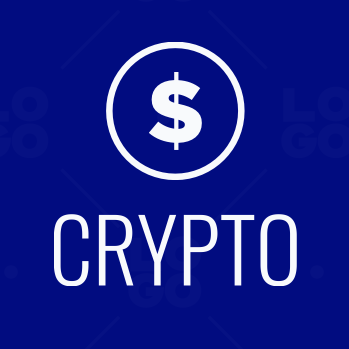3 Key Takeaways
- Utility-driven growth is defining 2025’s crypto market — projects with real-world use cases will lead.
- Bitcoin and Ethereum remain dominant, but networks like Solana, Chainlink, and Polygon are rapidly gaining influence.
- Interoperability and scalability will shape the 2026 crypto landscape as blockchain moves toward mass adoption.
Top 10 Cryptocurrencies to Watch in 2025: The Future of Digital Assets
As the digital economy matures, 2025 is shaping up to be a defining year for cryptocurrency. Regulatory clarity, institutional adoption, and technological innovation are converging — signaling a more stable, utility-driven market. While thousands of tokens flood the space, only a select few show long-term potential grounded in use cases, developer activity, and network resilience.
Here’s a clear-eyed look at the top cryptocurrencies to watch in 2025, what sets them apart, and how they may influence the industry’s trajectory heading into 2026.
Bitcoin (BTC): The Digital Gold Holds Its Ground
Even after 15 years, Bitcoin remains the benchmark for the entire crypto market. In 2025, its narrative has evolved from speculative asset to digital store of value and hedge against inflation. With halving events continuing to limit supply, Bitcoin’s scarcity model reinforces its position as a deflationary reserve asset.
Institutional adoption — from ETFs to sovereign fund allocations — has stabilized Bitcoin’s price behavior, even as volatility persists. Beyond price, Bitcoin’s Layer-2 solutions like the Lightning Network are making transactions faster and cheaper, expanding its real-world usability.
Ethereum (ETH): The Smart Contract Backbone
Ethereum continues to dominate the decentralized finance (DeFi) and Web3 sectors. Its 2023–2024 upgrades improved scalability and reduced energy consumption, solidifying its status as the go-to platform for developers.
By 2025, Ethereum is less about hype and more about infrastructure. Its Layer-2 ecosystem (including Arbitrum, Optimism, and zkSync) processes millions of daily transactions at minimal cost. With tokenized real-world assets, gaming, and decentralized identity projects flourishing, ETH remains indispensable.
As we move toward 2026, Ethereum’s biggest strength lies in its developer network — a community unmatched in size, innovation, and adaptability.
Solana (SOL): Speed Meets Scalability
After weathering technical setbacks in earlier years, Solana has emerged stronger. In 2025, it stands as a high-performance blockchain offering fast transaction speeds at ultra-low costs — a critical factor for developers building next-gen applications.
Its partnerships with major brands and gaming studios, along with growing NFT activity, show Solana’s capacity for mainstream integration. With improved network stability and environmental efficiency, it’s one of the most-watched ecosystems for both institutional and retail investors.
Avalanche (AVAX): The Enterprise Chain
Avalanche has carved out a reputation as the blockchain for enterprise-grade applications. Its subnet architecture allows businesses and governments to launch custom blockchains tailored to their specific needs — from finance to logistics.
In 2025, Avalanche’s interoperability with Ethereum smart contracts and expansion into regulated asset tokenization make it a key contender in the blockchain infrastructure race. With developers focusing on scalability and compliance, AVAX is becoming synonymous with real-world blockchain adoption.
Chainlink (LINK): The Data Oracle Powerhouse
If smart contracts are the brains of blockchain, Chainlink is the nervous system — connecting on-chain operations with real-world data. Its oracle networks provide secure, decentralized feeds for everything from financial markets to weather data.
By 2025, Chainlink’s Cross-Chain Interoperability Protocol (CCIP) has become a cornerstone of blockchain communication, enabling seamless data flow between networks. LINK’s role as a foundational component of the decentralized data economy makes it one of the most strategically vital assets to watch.
Polygon (MATIC): Layer-2 for the Masses
Polygon remains at the forefront of Ethereum scalability. Known for its developer-friendly tools and enterprise partnerships, it’s helping bring blockchain to millions of users.
In 2025, Polygon’s focus on zero-knowledge (ZK) rollups and environmental sustainability positions it as a bridge between Web2 and Web3. Global brands like Starbucks, Reddit, and Nike continue using Polygon for loyalty programs, NFTs, and consumer applications — real-world use cases that drive adoption far beyond the crypto community.
XRP (XRP): The Global Payments Engine
After years of legal uncertainty, XRP has made a notable comeback. By 2025, Ripple’s focus on cross-border payments and partnerships with banks and fintech firms worldwide have solidified its role as a liquidity bridge for international transactions.
Its low fees and high speed make it attractive for both institutional use and retail remittances. With regulatory clarity now in place in major jurisdictions, XRP is again being recognized as a key infrastructure asset in global finance.
Cardano (ADA): The Academic Vision Continues
Cardano takes a research-driven approach to blockchain development, emphasizing peer-reviewed protocols and sustainable scalability. Its Ouroboros consensus mechanism continues to evolve, improving both efficiency and security.
In 2025, Cardano is expanding its footprint in developing economies, particularly in education, digital identity, and agricultural supply chains. Its focus on social impact and real-world utility keeps it a top project for long-term investors looking beyond hype cycles.
Cosmos (ATOM): The Internet of Blockchains
As interoperability becomes the next major blockchain frontier, Cosmos stands out for its “Internet of Blockchains” model. Its Inter-Blockchain Communication (IBC) protocol allows multiple networks to exchange assets and data seamlessly.
In 2025, Cosmos is powering entire ecosystems of app-specific chains in DeFi, gaming, and infrastructure. As demand for cross-chain functionality rises, ATOM’s role as a unifier in an increasingly fragmented ecosystem makes it a quiet but powerful force.
Arbitrum (ARB): Scaling the Ethereum Universe
Arbitrum, one of Ethereum’s leading Layer-2 scaling solutions, has seen explosive growth in developer adoption. Its Rollup technology enables faster transactions with minimal fees while maintaining Ethereum-level security.
In 2025, Arbitrum is home to some of the most active DeFi and gaming applications, giving it a strong position among the top-performing networks. As the Ethereum ecosystem grows, ARB’s importance as a scalability enabler will only deepen.
The Bigger Picture: Trends Shaping 2026
Looking ahead to 2026, the cryptocurrency landscape is evolving from experimentation to integration. The next bull market won’t be fueled solely by speculation but by real-world adoption — in payments, digital identity, and artificial intelligence.
Key trends include:
- Interoperability — seamless communication between blockchains.
- Tokenization of real-world assets, including stocks, carbon credits, and real estate.
- AI and blockchain convergence, using decentralized systems to verify AI data and outputs.
As regulatory frameworks stabilize, institutional participation is set to grow, potentially pushing mainstream investors toward projects with proven use cases — the very ones listed above.
Conclusion: A Maturing Market with Purpose
The top cryptocurrencies to watch in 2025 share one common trait: utility over speculation. The era of meme coins and hype-driven rallies is fading, replaced by systems that power real-world innovation.
From Bitcoin’s resilience to Ethereum’s adaptability and Solana’s performance, the leading digital assets are building a foundation for global financial transformation. By 2026, the winners will be those that deliver tangible value — not just promises on a whitepaper.
For investors, developers, and institutions alike, 2025 is not just another cycle — it’s the year blockchain finally proves its worth.




